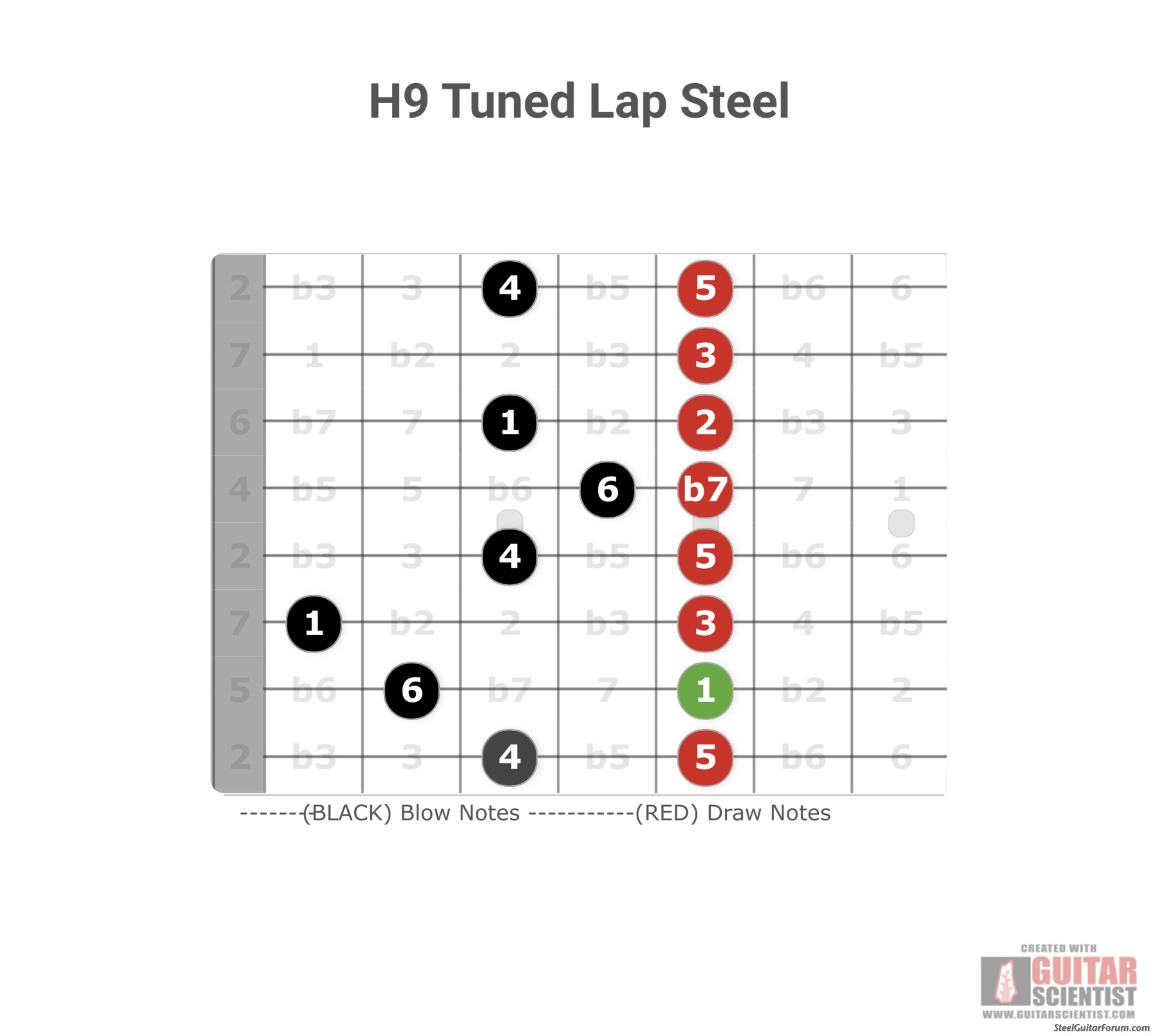Is a harmonica a dobro...or a Swingin' 9th Jazz Steel?
Posted: 10 Jan 2022 6:24 pm
Dang it - not 2 weeks into a new year and I broke my resolution to not talk about tunings. Ever. But this is different, I hope.
After 30 years of playing harmonica I’ve always approached my lap steel learning knowing there was solid connection between a harmonica and an open tuning. The pic shows all blow notes across the top of a C harp give you a C Major chord (it’s 135135 of the chord all the way across like a dobro) so a lap steel tuned to C6 just has one extra note. Easy concept for me to understand but has done nothing in terms of furthering my musical aptitude.

BUT I recently realized - most blues (and what I play) is played in 2nd position. This means the G draw note (2nd hole) becomes your root note and when you diagram it out and make a few tweaks to a standard tuning it gives a classic lap steel G9 chord with the following scale degrees lo-hi 5-1-3-5-b7-2-3-5 (works best on an 8-string) and you need the 5 on the bottom

It’s just a variation on the famous 9th tunings minus the 6th. There’s a finite pocket of notes to choose from in this H9 tuning (what I'm calling it) BUT because lap steel has the same notes in different places some licks are even easier. Not everything works (sounds good)- like you can’t do a classic two-hole shake - but the world probably doesn’t need more harmonica-type instruments anyways.
Kind of weird I never saw it before but makes 100% sense to my harp brain. Basically every lick I ever learned is right there in a 4-fret span. I can choose to play it in other places and harmonize etc...but if I "hear" it in my head - I now know it's ALL coming from there.
Crossover harp players - thoughts?
After 30 years of playing harmonica I’ve always approached my lap steel learning knowing there was solid connection between a harmonica and an open tuning. The pic shows all blow notes across the top of a C harp give you a C Major chord (it’s 135135 of the chord all the way across like a dobro) so a lap steel tuned to C6 just has one extra note. Easy concept for me to understand but has done nothing in terms of furthering my musical aptitude.

BUT I recently realized - most blues (and what I play) is played in 2nd position. This means the G draw note (2nd hole) becomes your root note and when you diagram it out and make a few tweaks to a standard tuning it gives a classic lap steel G9 chord with the following scale degrees lo-hi 5-1-3-5-b7-2-3-5 (works best on an 8-string) and you need the 5 on the bottom

It’s just a variation on the famous 9th tunings minus the 6th. There’s a finite pocket of notes to choose from in this H9 tuning (what I'm calling it) BUT because lap steel has the same notes in different places some licks are even easier. Not everything works (sounds good)- like you can’t do a classic two-hole shake - but the world probably doesn’t need more harmonica-type instruments anyways.
Kind of weird I never saw it before but makes 100% sense to my harp brain. Basically every lick I ever learned is right there in a 4-fret span. I can choose to play it in other places and harmonize etc...but if I "hear" it in my head - I now know it's ALL coming from there.
Crossover harp players - thoughts?